Audi 2012 Annual Report Download - page 39
Download and view the complete annual report
Please find page 39 of the 2012 Audi annual report below. You can navigate through the pages in the report by either clicking on the pages listed below, or by using the keyword search tool below to find specific information within the annual report.-
 1
1 -
 2
2 -
 3
3 -
 4
4 -
 5
5 -
 6
6 -
 7
7 -
 8
8 -
 9
9 -
 10
10 -
 11
11 -
 12
12 -
 13
13 -
 14
14 -
 15
15 -
 16
16 -
 17
17 -
 18
18 -
 19
19 -
 20
20 -
 21
21 -
 22
22 -
 23
23 -
 24
24 -
 25
25 -
 26
26 -
 27
27 -
 28
28 -
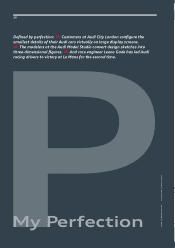 29
29 -
 30
30 -
 31
31 -
 32
32 -
 33
33 -
 34
34 -
 35
35 -
 36
36 -
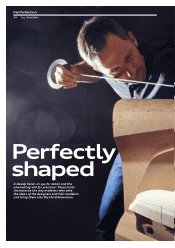 37
37 -
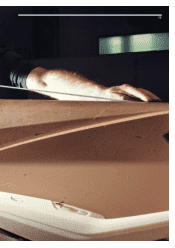 38
38 -
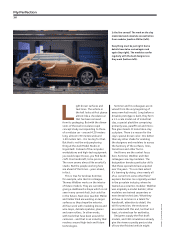 39
39 -
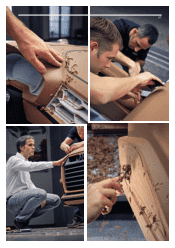 40
40 -
 41
41 -
 42
42 -
 43
43 -
 44
44 -
 45
45 -
 46
46 -
 47
47 -
 48
48 -
 49
49 -
 50
50 -
 51
51 -
 52
52 -
 53
53 -
 54
54 -
 55
55 -
 56
56 -
 57
57 -
 58
58 -
 59
59 -
 60
60 -
 61
61 -
 62
62 -
 63
63 -
 64
64 -
 65
65 -
 66
66 -
 67
67 -
 68
68 -
 69
69 -
 70
70 -
 71
71 -
 72
72 -
 73
73 -
 74
74 -
 75
75 -
 76
76 -
 77
77 -
 78
78 -
 79
79 -
 80
80 -
 81
81 -
 82
82 -
 83
83 -
 84
84 -
 85
85 -
 86
86 -
 87
87 -
 88
88 -
 89
89 -
 90
90 -
 91
91 -
 92
92 -
 93
93 -
 94
94 -
 95
95 -
 96
96 -
 97
97 -
 98
98 -
 99
99 -
 100
100 -
 101
101 -
 102
102 -
 103
103 -
 104
104 -
 105
105 -
 106
106 -
 107
107 -
 108
108 -
 109
109 -
 110
110 -
 111
111 -
 112
112 -
 113
113 -
 114
114 -
 115
115 -
 116
116 -
 117
117 -
 118
118 -
 119
119 -
 120
120 -
 121
121 -
 122
122 -
 123
123 -
 124
124 -
 125
125 -
 126
126 -
 127
127 -
 128
128 -
 129
129 -
 130
130 -
 131
131 -
 132
132 -
 133
133 -
 134
134 -
 135
135 -
 136
136 -
 137
137 -
 138
138 -
 139
139 -
 140
140 -
 141
141 -
 142
142 -
 143
143 -
 144
144 -
 145
145 -
 146
146 -
 147
147 -
 148
148 -
 149
149 -
 150
150 -
 151
151 -
 152
152 -
 153
153 -
 154
154 -
 155
155 -
 156
156 -
 157
157 -
 158
158 -
 159
159 -
 160
160 -
 161
161 -
 162
162 -
 163
163 -
 164
164 -
 165
165 -
 166
166 -
 167
167 -
 168
168 -
 169
169 -
 170
170 -
 171
171 -
 172
172 -
 173
173 -
 174
174 -
 175
175 -
 176
176 -
 177
177 -
 178
178 -
 179
179 -
 180
180 -
 181
181 -
 182
182 -
 183
183 -
 184
184 -
 185
185 -
 186
186 -
 187
187 -
 188
188 -
 189
189 -
 190
190 -
 191
191 -
 192
192 -
 193
193 -
 194
194 -
 195
195 -
 196
196 -
 197
197 -
 198
198 -
 199
199 -
 200
200 -
 201
201 -
 202
202 -
 203
203 -
 204
204 -
 205
205 -
 206
206 -
 207
207 -
 208
208 -
 209
209 -
 210
210 -
 211
211 -
 212
212 -
 213
213 -
 214
214 -
 215
215 -
 216
216 -
 217
217 -
 218
218 -
 219
219 -
 220
220 -
 221
221 -
 222
222 -
 223
223 -
 224
224 -
 225
225 -
 226
226 -
 227
227 -
 228
228 -
 229
229 -
 230
230 -
 231
231 -
 232
232 -
 233
233 -
 234
234 -
 235
235 -
 236
236 -
 237
237 -
 238
238 -
 239
239 -
 240
240 -
 241
241 -
 242
242 -
 243
243 -
 244
244 -
 245
245 -
 246
246 -
 247
247 -
 248
248 -
 249
249 -
 250
250 -
 251
251 -
 252
252 -
 253
253 -
 254
254 -
 255
255 -
 256
256 -
 257
257 -
 258
258 -
 259
259 -
 260
260 -
 261
261 -
 262
262 -
 263
263 -
 264
264 -
 265
265 -
 266
266 -
 267
267 -
 268
268 -
 269
269 -
 270
270 -
 271
271 -
 272
272 -
 273
273 -
 274
274 -
 275
275 -
 276
276 -
 277
277 -
 278
278 -
 279
279 -
 280
280 -
 281
281 -
 282
282 -
 283
283 -
 284
284 -
 285
285
 |
 |

My Perfection
Is the line correct? The work on the clay
model demands absolute concentration
from modeler Joachim Müller (left).
Everything must be just right: Some
details have to be revised again and
again (top right). The modelers confer
regularly with the Audi designers as
they work (bottom left).
Light brown surfaces and
taut lines. The vehicle in
the hall looks at first glance
almost like a chocolate car
that has been removed
from
its packaging. But with the dimen -
sions of the Audi crosslane coupé
concept study corresponding to those
of a mid size car – around 4.20 meters
long, al
most 1.90 meters wide and
1.50 meters
tall – it is too big for that.
But that is not the only perplexing
thing at the Audi Model Studio in
Ingolstadt. Instead of the computer
workstations and high-tech equipment
you would expect to see, you find handi -
craft. Fine handicraft, to be precise.
The room seems almost like an artist’s
studio. But the people working here
are ahead of the times – years ahead,
in fact.
This is true for Andreas Sommer,
for example, who like his colleague
Thomas Walther works on the interior
of future models. They are currently
giving a dashboard a shape which is not
seen in any current Audi, but could be
in the future. Next door Joachim Müller
and Volker Ried are working on larger
surfaces as they shape the exterior.
All four work with modeling knives and
wire loops, delicate spatulas, planes
and seam rollers. In other words,
with tools that have been around for
centuries – and that in an industry that
revolves around high-tech and future
technologies.
Sommer and his colleagues are in -
volved from the very beginning of
every new Audi model. Long before a
drivable prototype is built, they form
a 1:1-scale model out of industrial
clay, a special plastiline comprising
primarily wax, paran oil and micro-
fine glass beads. It looks like a clay
sculpture. There is a reason for the
clay’s special brown color: It is better
than any other shade for enabling
the designers and modelers to assess
the harmony of the surfaces, lines,
transitions and other forms.
And forms are the central focus
here. Sommer, Walther and their
colleagues are clay modelers. The
designation denotes particular skills
that these specialists have acquired
over the years. “To a certain extent
it’s learning by doing, since nearly all
of us come from some other field,”
explains Sommer. He originally worked
in the porcelain industry, where he
trained as a ceramics modeler. Walther
was originally a model builder; other
modelers are trained carpenters or
even dental technicians. What they
all have in common is a talent for
handicraft, attention to detail, the
will for precision, the endurance
associated with this and, last but not
least, a trained eye for aesthetics.
Designers supply the first draft
models, and CAD simulations already
give the viewer a pretty precise idea
of how the finished vehicle might
P H O T O S | M A N F R E D J A R I S C H
36
